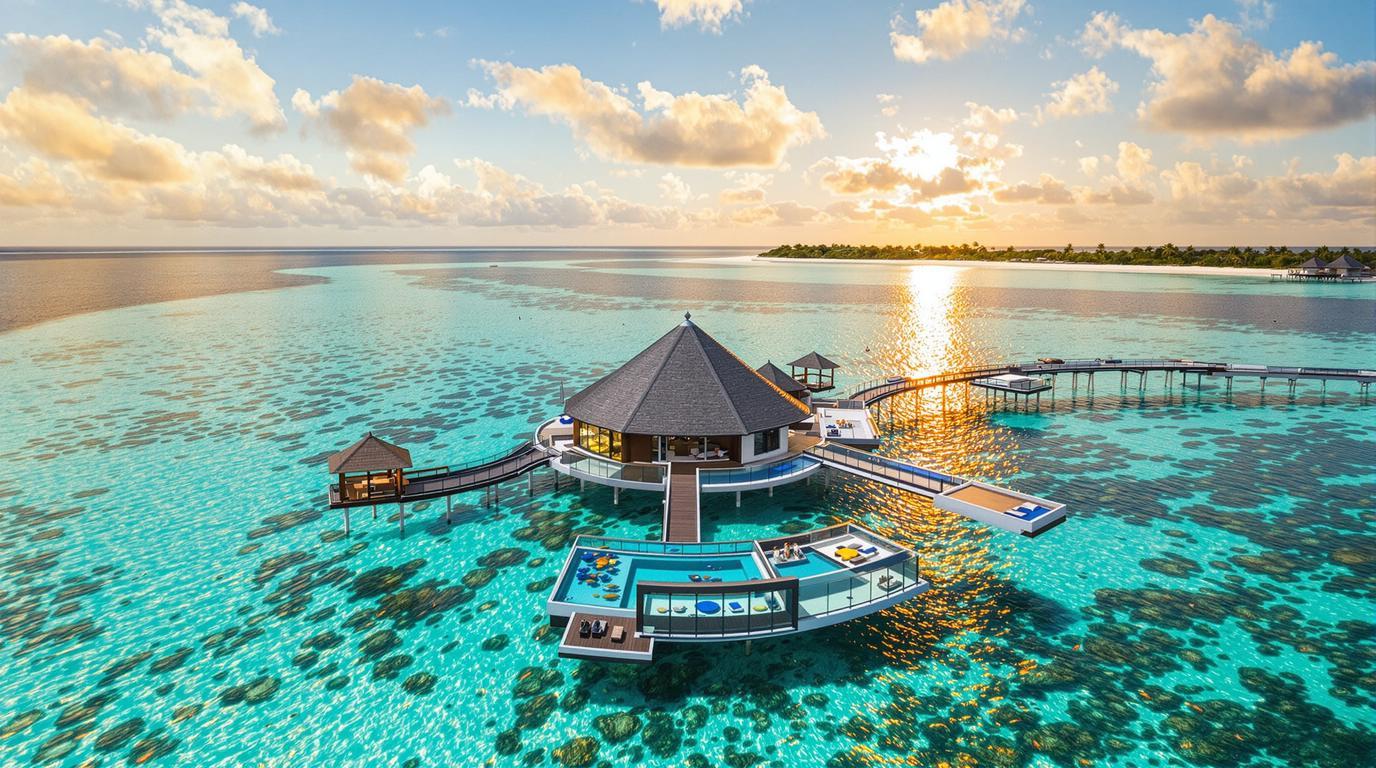# The Maldives: Where Each Island Becomes Your Private Paradise
The Maldives isn’t just a destination—it’s a parallel universe where reality seems suspended above crystal waters. This archipelago of coral atolls in the Indian Ocean operates on a unique “one resort per island” concept, creating what might be the world’s most exclusive vacation experience. With temperatures hovering around 30°C year-round and water visibility extending to 40 meters, this nation of 1,192 islands offers a rare combination of absolute luxury and untouched natural beauty.
## Private islands that redefine exclusivity
Unlike other tropical destinations, the Maldives pioneered the concept of single-resort islands, where stepping off your seaplane means entering your own private kingdom. Each resort occupies its own island, ranging from intimate hideaways to sprawling luxury compounds, all surrounded by their own house reef. This exclusivity creates an atmosphere impossible to replicate elsewhere—a sanctuary where privacy isn’t just promised but structurally guaranteed.
## Underwater adventures in living coral cities
Below the surface lies a parallel world that rivals the beauty above. The Maldives’ coral atolls host some of the planet’s most vibrant marine ecosystems, where manta rays glide overhead and whale sharks make regular appearances in South Ari Atoll. For those seeking truly exceptional experiences, natural spectacles await the adventurous traveler, though none quite compare to night diving with nurse sharks at Alimatha Jetty.
“When you dive in Fotteyo Kandu, you’re not just seeing coral—you’re witnessing one of the ocean’s masterpieces. The colors here are so intense they seem almost artificial,” explains Ibrahim, a veteran local dive master with over 1,000 dives in these waters.
## Overwater villas: floating between two blues
The iconic overwater villa, perfected in the Maldives, positions you suspended between two shades of blue—sky above, lagoon below. These architectural marvels feature glass floors revealing marine life, private infinity pools merging visually with the horizon, and direct ladder access to house reefs. While similar concepts exist elsewhere, they pale in comparison to the original. Some resorts even offer floating accommodations above vibrant lagoons that create an entirely different perspective.
## Beyond the luxury bubble
While resort islands dominate tourism, local islands like Maafushi and Fulidhoo offer glimpses into authentic Maldivian life. Here, guesthouses provide accommodations from $50-150 per night—a fraction of resort prices—while offering access to the same turquoise waters. Dawn fish markets, boat building workshops, and evening tea shops reveal a culture that existed long before tourism arrived.
## Dining with your feet in the sand
The Maldives pioneered “barefoot luxury” dining, where five-star cuisine is served directly on the beach. Fresh seafood dominates menus, from yellowfin tuna to lobster caught hours earlier. For the ultimate experience, private sandbank dinners—complete with personal chef and server—create memories that rival those warm mud experiences in Colombia’s volcanic regions.
## Conservation at the forefront
With the lowest elevation of any nation (1.5 meters above sea level), the Maldives faces existential threats from climate change. Many resorts have become environmental pioneers, implementing coral regeneration programs, solar power, and plastic-free initiatives. Some maintain marine biologists who involve guests in conservation efforts.
“Each piece of coral we plant is a statement of hope,” says Naseer, a marine biologist at a North Malé resort. “We’re showing visitors that luxury and conservation aren’t opposing forces—they’re essential partners.”
## Affordable alternatives to luxury
Budget travelers now access this paradise through local islands with public ferry connections. Fulidhoo in Vaavu Atoll offers world-class diving from $50-60 per tank, compared to $150+ at resorts. While you won’t find alcohol (prohibited outside resorts due to religious laws), you will discover pristine beaches rivaling those at California’s hidden beaches, with fewer crowds.
## Rebuilding beauty
The 1998 El Niño event devastated Maldivian reefs, bleaching nearly 90% of coral. Today’s visitors witness nature’s remarkable recovery, with reefs returning to their former glory through natural regeneration and human assistance. This revival parallels other remarkable resurrections like ancient cathedrals rising from ashes—beauty restored through persistence and care.
In the Maldives, what appears effortless—the perfect beach, the translucent water—actually results from geological processes spanning millions of years. Each atoll represents nature’s perfect marriage of destruction and creation: volcanic islands that sank, leaving coral rings in their place. Your footprints in this sand mark a temporary presence in a place where time itself seems suspended, offering a rare opportunity to experience paradise in its purest form.
